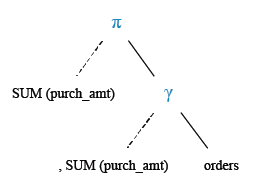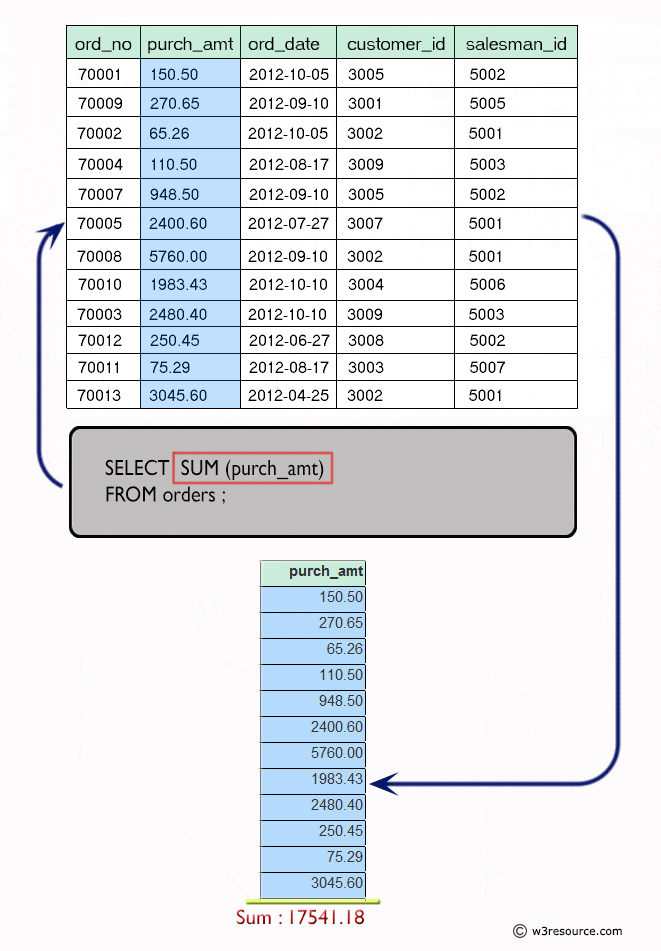SQL Exercises: Find the total purchase amount for all orders
1. Calculate Total Purchase Amount of All Orders
From the following table, write a SQL query to calculate total purchase amount of all orders. Return total purchase amount.
Sample table: orders
ord_no purch_amt ord_date customer_id salesman_id ---------- ---------- ---------- ----------- ----------- 70001 150.5 2012-10-05 3005 5002 70009 270.65 2012-09-10 3001 5005 70002 65.26 2012-10-05 3002 5001 70004 110.5 2012-08-17 3009 5003 70007 948.5 2012-09-10 3005 5002 70005 2400.6 2012-07-27 3007 5001 70008 5760 2012-09-10 3002 5001 70010 1983.43 2012-10-10 3004 5006 70003 2480.4 2012-10-10 3009 5003 70012 250.45 2012-06-27 3008 5002 70011 75.29 2012-08-17 3003 5007 70013 3045.6 2012-04-25 3002 5001
Sample Solution:
-- This query calculates the sum of the 'purch_amt' column.
SELECT SUM(purch_amt)
-- Specifies the table from which to retrieve the data (in this case, 'orders').
FROM orders;
Output of the Query:
sum 17541.18
Code Explanation:
The said query in SQL retrieve the sum of values in the "purch_amt" column from the 'orders' table.
The "SELECT SUM (purch_amt)" statement specifies that the sum of the values in the "purch_amt" column should be retrieved. The result of this query will be a single value that represents the sum of all values in the "purch_amt" column in the 'orders' table.
Relational Algebra Expression:
Relational Algebra Tree:
Explanation:
Visual presentation:
Go to:
PREV : SQL Aggregate Functions Exercises Home
NEXT : Calculate Average Purchase Amount of All Orders.
Practice Online
For more Practice: Solve these Related Problems:
- Write a SQL query to calculate the total purchase amount for orders placed in the year 2012.
- Write a SQL query to calculate the total purchase amount for orders placed by customer ID 3005.
- Write a SQL query to calculate the total purchase amount for orders placed by salesman ID 5001.
- Write a SQL query to calculate the total purchase amount for orders placed between '2012-07-01' and '2012-09-30'.
Have another way to solve this solution? Contribute your code (and comments) through Disqus.
What is the difficulty level of this exercise?
Test your Programming skills with w3resource's quiz.




